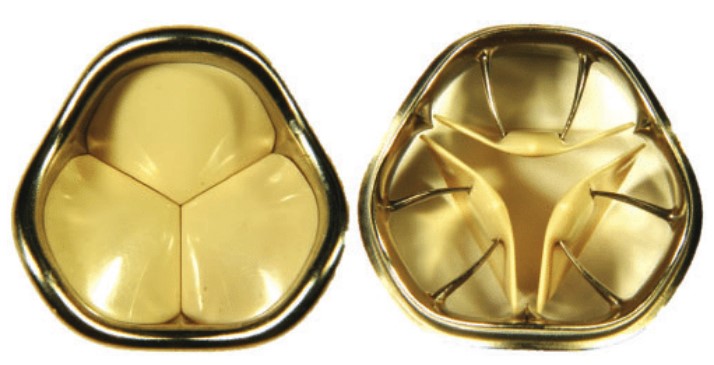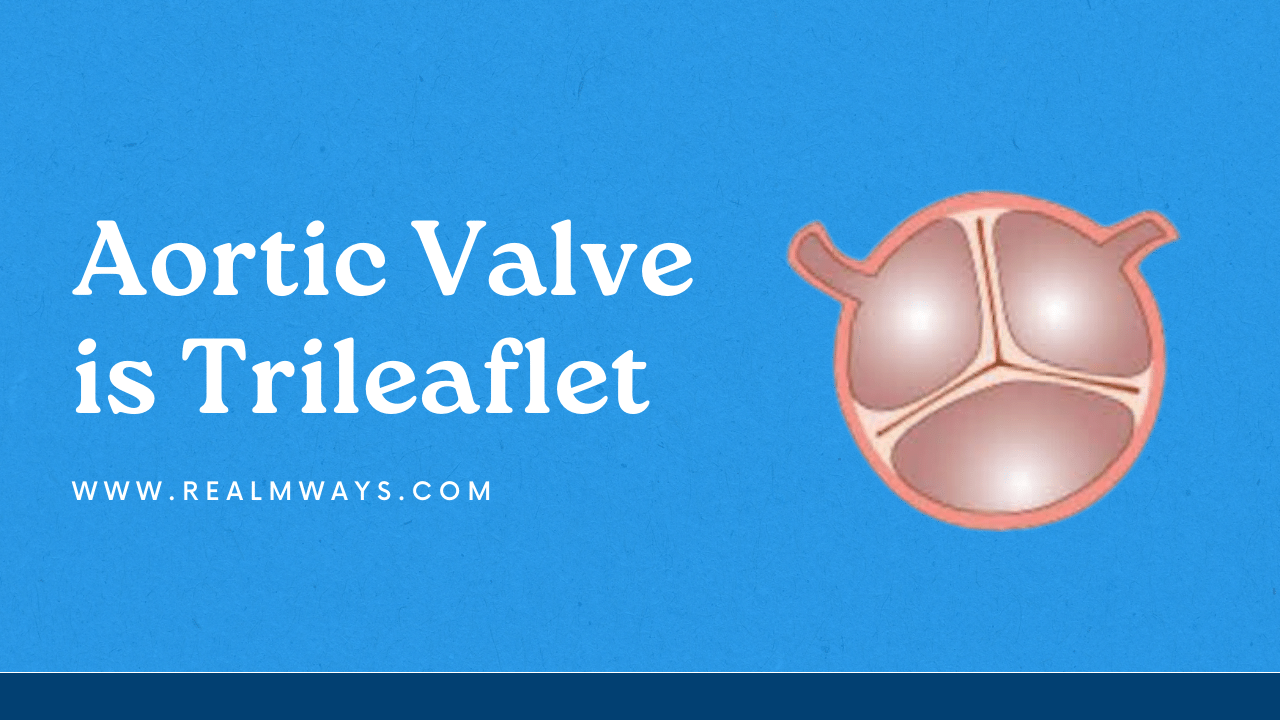The aortic valve, a vital component of the human heart, has intrigued scientists for centuries due to its complex structure and critical function. Often described as trileaflet, it is a marvel of anatomical engineering. As the gatekeeper between the heart and the aorta, the largest artery in the body, the aortic valve plays a pivotal role in our cardiovascular health. This article delves into the exciting world of the Aortic Valve is Trileaflet, providing you with authoritative and trust-inspiring information.
Anatomy of the Aortic Valve is Trileaflet

The term ‘trileaflet’ describes the aortic valve’s structure accurately. As its name suggests, this valve consists of three flexible, thin leaflets or cusps. These include the left, right, and noncoronary cusps. When we examine the aortic valve anatomy, these leaflets are a visual representation of natural precision and adaptability.
Each cusp, a product of carefully orchestrated aortic valve development, comes equipped with robust fibrous tissue. This tissue grants it the strength and flexibility to open and close countless times over a person’s lifespan. Truly, the aortic valve structure is a testament to nature’s perfection.
Function of the Trileaflet Aortic Valve
Understanding the trileaflet aortic valve function gives us insights into the incredible coordination happening within our bodies every second. During each heartbeat, the trileaflet aortic valve performs a carefully timed opening and closing act.
When the heart contracts to pump blood, the valve opens, allowing oxygen-rich blood to flow from the left ventricle into the aorta. From here, the blood embarks on its journey to nourish every cell in the body. Once the heart relaxes, the valve closes, preventing the backflow of blood into the heart. This regulation of blood flow is a vital part of the aortic valve characteristics, displaying an orchestrated symphony of life.
Abnormalities in the Aortic Valve is Trileaflet
Just as with any other component of our bodies, the trileaflet aortic valve can face potential issues. Aortic valve disorders are conditions that can impede the efficient functioning of this crucial valve. These disorders can stem from congenital issues, like a bicuspid aortic valve, or develop due to conditions such as aortic valve calcification or aortic valve stenosis.
Knowing the symptoms of these conditions and understanding the aortic valve diseases can make a world of difference to cardiovascular health. It allows us to take early action, ensuring a prompt and effective response to potential problems.
Common Queries
How is the trileaflet aortic valve different from a bicuspid aortic valve?
A normal aortic valve is trileaflet, with three cusps. A bicuspid aortic valve, however, only has two cusps. This congenital condition can lead to complications like aortic stenosis or regurgitation and may require treatment.
What are the treatment options for trileaflet aortic valve diseases?
Treatment options depend on the specific condition. They can range from medication to manage symptoms to surgical procedures like aortic valve replacement for more severe cases.
Can trileaflet aortic valves develop calcification?
Yes, calcification, a process where calcium deposits build up on the cusps, can affect trileaflet aortic valves. This condition can lead to aortic stenosis, narrowing the valve and impeding blood flow.
Are there any risk factors for trileaflet aortic valve dysfunction?
Several factors can increase the risk of trileaflet aortic valve dysfunction. Some of these include congenital heart conditions, aging, a history of infections that can affect the heart, such as rheumatic fever, and certain metabolic disorders like kidney disease or diabetes. A healthy lifestyle can help mitigate some of these risk factors.
What are the symptoms of trileaflet aortic valve disorders?
Symptoms of trileaflet aortic valve disorders can range from mild to severe, and in some cases, there may be no symptoms at all in the early stages. When symptoms do occur, they may include shortness of breath, fatigue, chest pain or discomfort, fainting, and palpitations or a feeling of rapid, fluttering heartbeats.
How is trileaflet aortic valve insufficiency diagnosed and treated?
Diagnosis of trileaflet aortic valve insufficiency often involves several steps, including a physical exam, listening to the heart sounds with a stethoscope, and diagnostic tests like an echocardiogram. Treatment depends on the severity of the condition and the presence of symptoms and can range from watchful waiting in mild cases to medication and surgery in more severe cases.
Can trileaflet aortic valve diseases be prevented?
While it’s not possible to prevent all cases of Aortic Valve is Trileaflet diseases, especially those caused by congenital conditions or aging, certain measures can reduce the risk. This includes maintaining a healthy lifestyle, regular check-ups, managing other health conditions that could affect the heart, and prompt treatment of any heart infections.
What is the prognosis for individuals with trileaflet aortic valve abnormalities?
The prognosis for individuals with Aortic Valve is Trileaflet abnormalities varies significantly depending on the nature and severity of the condition, the individual’s overall health, and the success of treatment. However, with the advent of sophisticated diagnostic tools and advanced treatment options, many people with these conditions lead full, active lives.
Also Read: Ashley Elizabeth Beauty: Unleashing Your Inner Glam
Conclusion
The Aortic Valve is Trileaflet, with its intricate design and critical role in our cardiovascular system, continues to captivate medical experts and laypeople alike. Understanding its structure, function, and the disorders that can affect it is not just a journey through one of the body’s most vital components; it’s a testament to the miracle of human life. As we move forward, let’s appreciate the delicate, complex, and incredible nature of our bodies and continue our exploration into the intricate world of the trileaflet aortic valve. After all, knowledge is power and knowing more about our bodies is the first step in ensuring our health and wellbeing.

Tasha Harshman is a dynamic writer with a broad range of expertise. She creates compelling and informative content, offering valuable insights and consistently engaging readers with her deep knowledge and passion for a variety of subjects.

